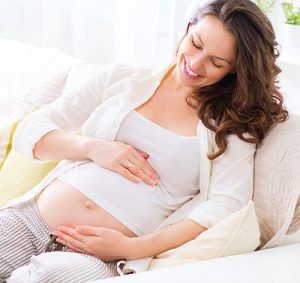7 Positive Effects of Uterine Fibroid Embolization
- Details
- by: Leah Johnson
Uterine Fibroid Embolization
Making a decision to have a surgical procedure is never easy. But if your uterine fibroids are causing heavy bleeding, fatigue, embarrassment in social situations, infertility and other symptoms, uterine fibroid embolization (UFE) should be a serious consideration. UFE is a minimally invasive option that can give you greater freedom and improve health outcomes. This includes anemia and chronic pain, and preserve the hope of having a healthy pregnancy. But minimally invasive procedures still have risks. Is UFE worth it? By far, the positive effects of UFE make it a choice that can be made with confidence. Many women happily report changes in the following:
1. Relief from Heavy Menstrual Bleeding

2. Alleviate Chronic Pain
Some women with fibroids may experience agonizing periods, slight aches in their thighs, back pain or a bloating or fullness feeling in their lower stomach area. Fibroids and pain each point to a different warning signaling from the body. For example, menstrual cramps during a period may be common for some individuals, but for women with fibroids, this pain may be due to large clots of blood pushing through the cervix. Cramps may also be a result of the uterus trying to push out a submucosal fibroid that is in the cavity of the uterus. Also, some fibroids become so big they begin to push on nerves and blood vessels that extend out to the legs, which causes significant leg pain and discomfort. A wonderful benefit of UFE is that the pain you associate with fibroids dwindles within a brief length of time post-procedure.
3. Diminish Anemia
Menorrhagia, the heavy menstrual bleeding people associate with fibroids, can cause women to become anemic, sometimes to the point of requiring a blood transfusion. Fatigue and dizzyness is common for women due to their anemia and fibroids. This is due to the loss of iron which carries oxygen throughout the bloodstream. However, once the fibroids are eliminated, heavy bleeding will diminish. As a result, your body is able to recover and you can build up your iron reserves gradually, without the threat of further heavy blood loss.
 4. Eliminate Discomfort from Sex
4. Eliminate Discomfort from Sex
Fibroid symptoms such as heavy bleeding, pelvic pain, uncontrollable urination, and bloating, can make sex less than a pleasurable experience. Since fibroids shrink soon after UFE, the pain and discomfort from sex and fibroids generally improves. Additionally, the removal of the fibroids allows the uterus to better contract. This results in a woman’s sexual experience notably improving after UFE. Perhaps most important, UFE has little to no effect on a woman’s hormonal status. As the level of sexual desire is typically maintains rather than decreases.
5. Increase in Body Image
Many women notice a significant change in how their body, particularly their abdomen, looks after the procedure. While before UFE, many women have a noticeable “pooch” or rounded belly where the enlarged uterus protrudes, the abdomen is noticeably flatter and smoother after UFE. In many cases, the fibroid, or fibroids, decrease to a size where they no longer are outwardly visible. However, depending on the size of the fibroid(s) and the amount of time it takes for them to shrink, there is still the chance that a slight protrusion in the abdominal area will remain for some women.
6. Fibroid Shrinkage
Uterine fibroid embolization has an overall success rate of 94 percent. This means 94 percent of patients experienced 50 to 60 percent shrinkage of their fibroids. After UFE, the embolized fibroid begins the process of shrinking. It immediately loses its supply of oxygen, blood, and nutrients. Over the subsequent weeks and months, individual muscle cells in the fibroid die off and are replaced by scar tissue. This scar tissue is about half as big as the original fibroid, or slightly smaller. Because scar tissue is not influenced by hormonal stimulation like fibroids are, the normal menstrual cycle no longer causes fibroids to grow, resulting in lighter periods, less pain, and less pressure.
7. Pregnancy


 4. Eliminate Discomfort from Sex
4. Eliminate Discomfort from Sex